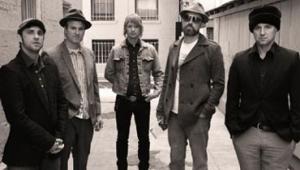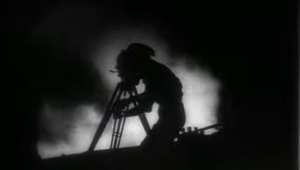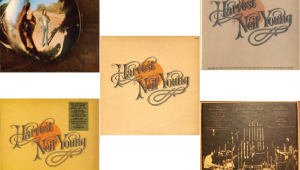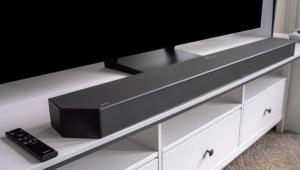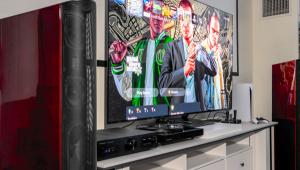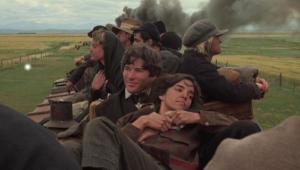Now Playing: The Man Who Invented Home Theater Page 3
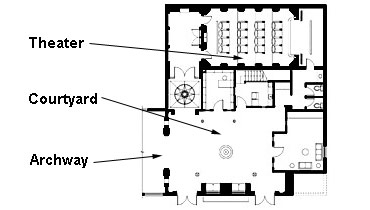
Theo didn't go straight from his basement brownstone to multimillion-dollar systems. "You can't jump from nothing to something overnight, especially when I had no formal training in architecture. So I kept upping the ante with every theater, always learning from my mistakes. Plus it kept challenging me to do more intricate, more architecturally developed designs. This is how I developed my vocabulary in theater design."
With one early design milestone, based on the old Paramount Theater in New York, the client pushed Theo's boundaries. "He was very much into movies, and he challenged me to explore new ideas and territories. This became my first theater with an outside marquee, an entry vestibule, an outer lobby and an inner lobby, a staircase to the main auditorium, and a functioning stage with a curtain illuminated by theatrical footlights. It allowed me to capture the ceremony of going from outside to the inside through a series of rooms that heighten the anticipation. It wasn't just a room, it was an environment where you went in and left the house behind."
 |
| Theo believes there should be a sense of anticipation before you walk into a home theater. For this Tampa installation, he built an archway (above left) that leads into a Caribbean-style courtyard featuring "stores" for the owner's various collections (middle), which then leads into the ornate theater (right). |
I've studied many of Theo's projects, and my favorite is one he did in Tampa, Florida (see schematic above and photos below). The result is an amazing re-creation of a Caribbean village, located in a 4,500-square-foot extension of the family's home. "We came up with the concept of creating a streetscape outside with different 'stores' to house the owner's various activities. There's a bookstore for his book collection, an ice cream/soda shop for the kids, a cigar bar with a VIP card-playing lounge, and an outdoor restaurant. We developed a whole architectural street; I spent 2 weeks in Antigua and Curaçao taking photos and documenting doors, signs, and roof tiles to make the project authentic."
While he doesn't specify the gear that goes into an installation, Theo does appreciate how advancements have benefited his designs. "One of the greatest developments is that some in-wall speakers are now as good as bookshelf models. Another great improvement was the elimination of [CRT] three-beam projectors. There was no way to hide those things. Years ago, for a Ukrainian dignitary, we had these two giant Runco projectors that had to be covered so they wouldn't be exposed in the front row. When they opened the crate that the cover came in, the client called and asked, 'Theo, what did you send us here? The tomb of Lenin?!' God bless all these long-throw lenses, because now we can hide the projector in the back of the room."
As a movie lover, Theo welcomes the recent video improvements that have come to home theater, namely anamorphic lenses and cinema-wide screens. "The fact that we lost the black bars and are able to extend the picture to capture the impact of widescreen with no loss of resolution might be the biggest improvement for viewing movies at home. There's something backwards about watching a movie like Star Wars in smaller screen real estate than something like Dude, Where's My Car? I tell clients they need an anamorphic lens and screen to transition from regular 16:9 to the wider aspect ratio to preserve the grandeur of the very wide screen."
- Log in or register to post comments













